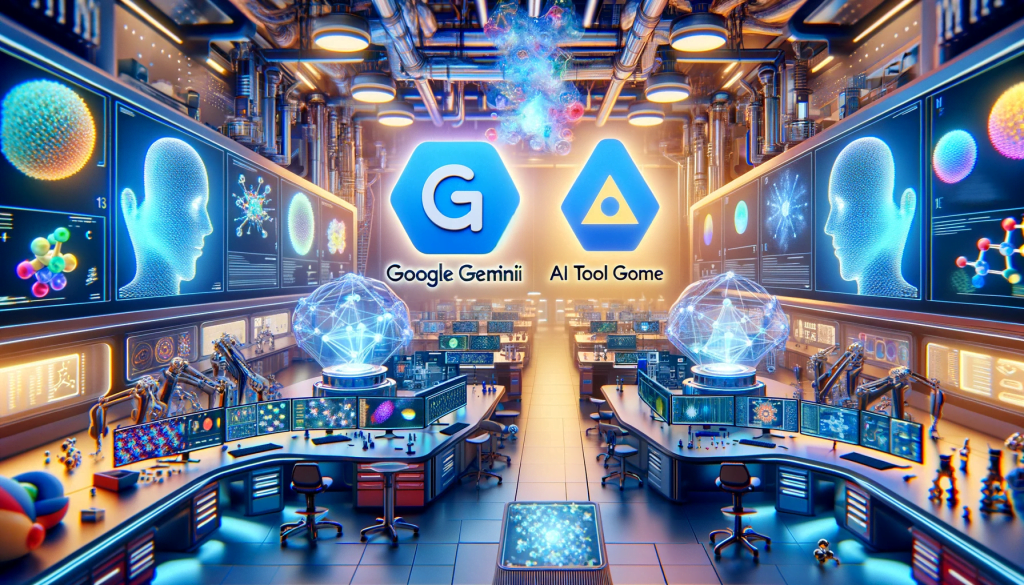Introduction:
AI Tool GNoME is revolutionizing the field of materials science, marking the dawn of a new era in technological and scientific advancement. Developed by the pioneering minds at Google DeepMind, this groundbreaking tool is reshaping the landscape of discovery and innovation. It stands as a beacon of progress, offering immense potential to a multitude of industries, from renewable energy to advanced computing. By redrawing the boundaries of what’s possible, AI Tool GNoME is not just a marvel of technology; it’s a harbinger of a future where the limits of material science are continually expanded and redefined.
AI Tool GNoME: A New Frontier in AI-Assisted Discovery
The AI tool GNoME stands as a monumental achievement in artificial intelligence’s application to material science. With its ability to discover over 2.2 million new crystal structures, GNoME has expanded the known universe of stable materials by an astonishing margin. This feat, equivalent to almost 800 years of human discovery, marks a new paradigm in how we approach material innovation.
How AI Tool GNoME is Transforming Research
GNoME’s prowess lies in its methodology. Traditional material discovery, often a costly and time-intensive endeavor, has been dramatically streamlined. By employing machine learning algorithms, GNoME efficiently generates candidate structures and assesses their stability, bypassing the laborious trial-and-error process that has long been a staple in materials science.
The Practical Implications of GNoME’s Discoveries

The practical applications of GNoME’s discoveries are vast and varied. Among the 380,000 stable materials identified, many hold the potential to revolutionize industries. From the development of new solar cells and superconductors to advancements in neuromorphic computing, the materials unearthed by GNoME could be the key to next-generation technologies.
Collaborations and Future Applications of AI Tool GNoME
Collaboration is at the heart of GNoME’s success. In partnership with researchers from the University of California, Berkeley, and the Lawrence Berkeley National Laboratory, GNoME’s predictions have already led to the successful creation of new materials. This synergy between AI predictions and human ingenuity is not just a triumph of science; it’s a blueprint for future innovations.
AI Tool GNoME: The Path Forward
As we look to the future, the AI tool GNoME stands as a testament to the power of artificial intelligence in pushing the frontiers of science. It’s not just about discovering new materials; it’s about reshaping the world as we know it. From enabling greener technologies to enhancing computing capabilities, GNoME is at the forefront of a new scientific revolution.
Conclusion:
In summary, the AI Tool GNoME represents a groundbreaking advancement in materials science, revolutionizing the way we discover and utilize materials. Its impressive capability to predict over 2.2 million new crystal structures, including 380,000 stable materials, signifies a monumental leap in technological and scientific exploration. This innovation by Google DeepMind is not just a triumph of artificial intelligence but a pivotal moment in scientific history, opening doors to a world of unexplored possibilities.
Moreover, GNoME’s impact extends beyond the laboratory. Its discoveries promise to catalyze significant advancements across various sectors, from renewable energy and advanced computing to the development of more efficient electric vehicles. By streamlining the material discovery process, GNoME is setting the stage for a future where technological and material limitations are dramatically reduced. As we embrace this new era, GNoME stands not only as a tool of discovery but as a beacon of progress, guiding us towards a future rich in innovation and boundless potential.
FAQs About AI Tool GNoME
Q1. What is AI Tool GNoME and How Does it Work?
AI Tool GNoME (Graph Networks for Materials Exploration) is a state-of-the-art artificial intelligence program developed by Google DeepMind. It employs advanced machine learning techniques, particularly graph neural networks, to predict the stability and structure of new crystal materials. GNoME analyzes vast amounts of data to identify potential new materials, drastically reducing the time and resources needed for traditional material discovery processes.
Q2. What Makes AI Tool GNoME Unique in Material Science?
The uniqueness of AI Tool GNoME lies in its unprecedented ability to rapidly discover new materials. It has identified over 2.2 million new crystal structures, including 380,000 stable materials. This scale of discovery is a significant leap compared to traditional methods, marking a new era in materials science.
Q3. What are the Potential Applications of Materials Discovered by AI Tool GNoME?
The materials discovered by AI Tool GNoME have wide-ranging applications. They can potentially revolutionize various industries, including renewable energy (like solar panels), advanced computation (such as neuromorphic computing), and battery technology for electric vehicles. These materials open up possibilities for developing more efficient, sustainable, and higher-performing technologies.
Q4. How Does AI Tool GNoME Benefit Scientific Research and Industry?
AI Tool GNoME benefits scientific research and industry by significantly accelerating the discovery of new materials. This acceleration enables quicker development and deployment of advanced technologies. It also reduces the cost and resources associated with material research, fostering innovation in various scientific and industrial fields.
